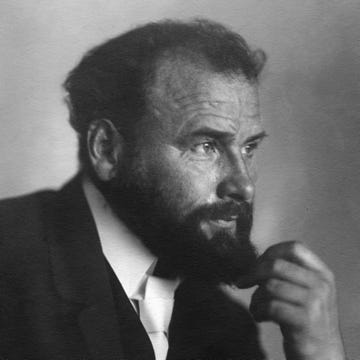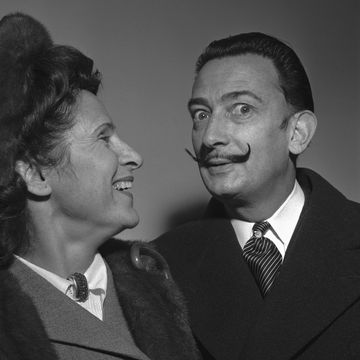(1894-1978)
Who Was Norman Rockwell?
Norman Rockwell received his first commission at age 17. In 1916, he created the first of 321 covers for The Saturday Evening Post. Rockwell's Americana images were loved by the public, but not embraced by critics. He created World War II posters and received the Presidential Medal of Freedom in 1977.
Early Years
Born Norman Percevel Rockwell in New York City on February 3, 1894, Rockwell knew at the age of 14 that he wanted to be an artist, and began taking classes at The New School of Art. By the age of 16, Rockwell was so intent on pursuing his passion that he dropped out of high school and enrolled at the National Academy of Design. He later transferred to the Art Students League of New York. Upon graduating, Rockwell found immediate work as an illustrator for Boys' Life magazine.
By 1916, a 22-year-old Rockwell, newly married to his first wife, Irene O'Connor, had painted his first cover for The Saturday Evening Post — the beginning of a 47-year relationship with the iconic American magazine. In all, Rockwell painted 321 covers for the Post. Some of his most iconic covers included the 1927 celebration of Charles Lindbergh's crossing of the Atlantic. He also worked for other magazines, including Look, which in 1969 featured a Rockwell cover depicting the imprint of Neil Armstrong's left foot on the surface of the moon after the successful moon landing. In 1920, the Boy Scouts of America featured a Rockwell painting in its calendar. Rockwell continued to paint for the Boy Scouts for the rest of his life.
Commercial Success
The 1930s and '40s proved to be the most fruitful period for Rockwell. In 1930, he married Mary Barstow, a schoolteacher, and they had three sons: Jarvis, Thomas and Peter. The Rockwells relocated to Arlington, Vermont, in 1939, and the new world that greeted Norman offered the perfect material for the artist to draw from. Rockwell's success stemmed to a large degree from his careful appreciation for everyday American scenes, the warmth of small-town life in particular. Often what he depicted was treated with a certain simple charm and sense of humor. Some critics dismissed him for not having real artistic merit, but Rockwell's reasons for painting what he did were grounded in the world that was around him. "Maybe as I grew up and found the world wasn't the perfect place I had thought it to be, I unconsciously decided that if it wasn't an ideal world, it should be, and so painted only the ideal aspects of it," he once said.
Still, Rockwell didn't completely ignore the issues of the day. In 1943, inspired by President Franklin D. Roosevelt, he painted the Four Freedoms: Freedom of Speech, Freedom of Worship, Freedom from Want and Freedom from Fear. The paintings appeared on the cover of The Saturday Evening Post and proved incredibly popular. The paintings also toured the United States and raised in excess of $130 million toward the war effort. In 1953 the Rockwells moved to Stockbridge, Massachusetts, where Norman would spend the rest of his life.
Following Mary's death in 1959, Rockwell married a third time, to Molly Punderson, a retired teacher. With Molly's encouragement, Rockwell ended his relationship with the Post and began doing covers for Look. His focus also changed, as he turned more of his attention to the social issues facing the country. Much of the work centered on themes concerning poverty, race and the Vietnam War.
Ruby Bridges Painting
One such socially charged piece, titled, "The Problem We All Live With," appeared on the cover of Look on January 14, 1964. Inspired by 6-year-old Ruby Bridges' integration of New Orleans' William Frantz Public School in 1960, the work shows a small African American girl flanked by faceless U.S. marshals as she walks past a wall bearing the marks of a smashed tomato and a scrawled racial epithet. "The Problem We All Live With" generated hate mail for the artist known for depicting romanticized visions of American life, but it became one of the most important pieces of his career: It was the first painting acquired by the Norman Rockwell Museum in 1975, and later hung in the White House during President Barack Obama's first term.
Final Years and Death
In the final decade of his life, Rockwell created a trust to ensure his artistic legacy would thrive long after his passing. His work became the centerpiece of what is now called the Norman Rockwell Museum in Stockbridge. In 1977, one year before his death, Rockwell was awarded the Presidential Medal of Freedom by President Gerald Ford. In his speech Ford said, "Artist, illustrator and author, Norman Rockwell has portrayed the American scene with unrivaled freshness and clarity. Insight, optimism and good humor are the hallmarks of his artistic style. His vivid and affectionate portraits of our country and ourselves have become a beloved part of the American tradition."
Rockwell died at his home in Stockbridge, Massachusetts, on November 8, 1978.
QUICK FACTS
- Name: Norman Rockwell
- Birth Year: 1894
- Birth date: February 3, 1894
- Birth State: New York
- Birth City: Brooklyn
- Birth Country: United States
- Gender: Male
- Best Known For: Norman Rockwell illustrated covers for 'The Saturday Evening Post' for 47 years. The public loved his often-humorous depictions of American life.
- Industries
- Art
- Astrological Sign: Aquarius
- Schools
- Art Students League of New York
- National Academy of Design
- Death Year: 1978
- Death date: November 8, 1978
- Death State: Massachusetts
- Death City: Stockbridge
- Death Country: United States
Fact Check
We strive for accuracy and fairness.If you see something that doesn't look right,contact us!
CITATION INFORMATION
- Article Title: Norman Rockwell Biography
- Author: Biography.com Editors
- Website Name: The Biography.com website
- Url: https://www.biography.com/artists/norman-rockwell
- Access Date:
- Publisher: A&E; Television Networks
- Last Updated: December 1, 2021
- Original Published Date: April 2, 2014
QUOTES
- I'll never have enough time to paint all the pictures I want to.












